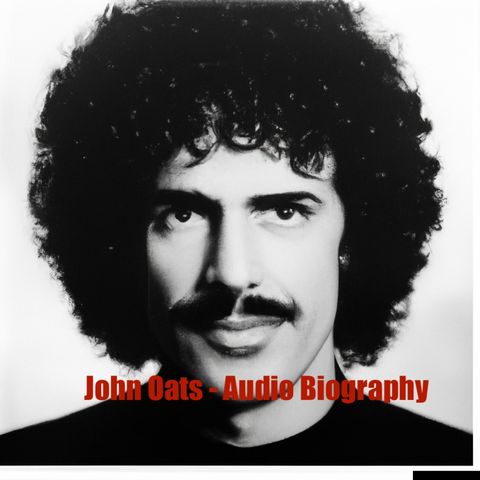From his early exploration of American folk music to becoming one half of the best selling musical duo in history, John Oates’ six decade career reveals an artist always evolving. While his rhythm guitar and unforgettable backup vocals catapulted smash hits like “Maneater” and “Out of Touch”, Oates later embraced blues heritage and last name “Mississippi” roots. After being underappreciated even at Hall & Oates’ commercial peak, he’s since earned recognition as master blues/R&B collaborator and solo troubadour. This biography traces John Oates' six decade musical journey. Origins in Americana Folk & Early Partnerships Born John William Oates on April 7, 1948 in New York City, his family moved frequently due to father’s work as a contractor. After living in towns across upstate New York, Oates settled in North Wales, Pennsylvania during high school years. Finding refuge from constant relocation in music, he obsessed over folk artists like Woody Guthrie, Lead Belly, and Pete Seeger. Oates taught himself basic chords on a $10 mail-order guitar and started local Americana band The Temptones at 15 years old. After the 1967 founding of Hall & Oates, folk music remained Oates' first passion even as the duo drifted more into R&B-laced rock. During spurts of solo activity in late 1960s, Oates revived The Temptones and teamed up with rockabilly legend Gene Vincent. He got early taste for genre fluidity backing Vincent’s proto-punk intensity with banjo rolls and mandolin rambunctiousness. Oates took on added creative role penning several Deep Feeling band tracks after their formation in early 1970s. Across these early rotating partnerships from high school garage outfits to sessions with legends, musical chops grew. But an identity still percolated undefined. Finding Signature Sound & Style in Hall & Oates The 1972 formation of Hall & Oates proved career changing as Daryl Hall’s soulful vocals and Oates’ rhythmic grooves clicked. After honing infectious blend of pop, rock and R&B during early 1970s, the band exploded onto national scene with 1975 smash “Sara Smile” fueled by Oates’ propulsive acoustic riffs and searing backup harmonies. As future #1 hits piled up decade after decade, his economical guitar parts, co-songwriter credits and velvet coos cemented style. Oates had less solo spotlight than frontman Hall, sometimes fading behind flamboyant costumes/persona projected in videos like “Family Man”. But his reliable musicianship facilitated the duo’s prolific output. Rhythm parts allowed tunes to breathe while layered harmonies and textured production polished the sheen. By the peak “Private Eyes” and “I Can’t Go For That (No Can Do)” era when they dominated 1980-81 charts, Oates hit creative stride even if fame imbalance brewed tensions. Emergence of Blues Influenced Solo Work After the high 1990’s period where Hall & Oates toured large venues like New York’s Madison Square Garden, periods of burnout and talks of retirement ensued. Oates began releasing more solo work like “Mississippi Mile” in 2001 melding Americana with soulful blues. Phish and other jam bands started covering his folk songs, earning fan base respect. Though always helping spearhead Hall & Oates reunions every several years to satisfy commercial synergy and pop perfectionist itches, bluesier solo directions took hold throughout early 2000s. Oates especially embraced Mississippi Delta heritage after discovering great-grandfather’s trailblazing 1800s migration and integrating influences like Sam Cooke’s gospel tones blended with dirty blues guitar. Resulting original albums like “1000 Miles of Life” and covers collections like “Arkansas” display roots affinity. Standout reprisal of classic “Girl From the North Country” with Indigo Girls and Shawn Colvin spotlighted Americana chops beyond just pop hooks. Even 2021 memoir “Change of Seasons” traced quest for creative fulfillment oscillating from bond with Daryl into solo territory across decades peppered by insecurity and depression struggles underneath chart-topping wealth. Continued Collaborations & Legacy Recognition Despite strong solo catalog signaling more singular artistry, Oates continues eagerly collaborating whether sleek Hall & Oates pop comebacks or bluesy sit-ins with Warren Haynes. His iconic look also shifted from copious facial hair and puffy sleeves into streamlined suits and chin goatee paired with bluesman fedora. Recent induction into prestigious Songwriters Hall of Fame also recognizes songwriting scope beyond big hits. After years feeling underrated despite commercial success, John Oates finally earns acknowledgement as multi-genre maestro of Americana grooves through six decades navigating changing eras and expectations - a musical auteur still little-known and under-sung. Perhaps that paradox fittingly echoes early Seeger and Guthrie influences, themselves unpredictable and understated pioneers. Even within best-selling pop formulas, one detects subtle folksy rebellion simmering under Oates’ locked rhythm guitar pocket and Pennsylvania roots deeper than hits alone. Wherever his muse calls next, American music flows through him as both legacy and destiny. Thanks for listening to Quiet Please. remember to like and share wherever you get your podcasts
show less


